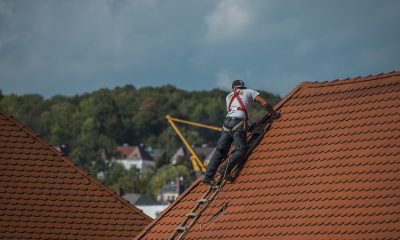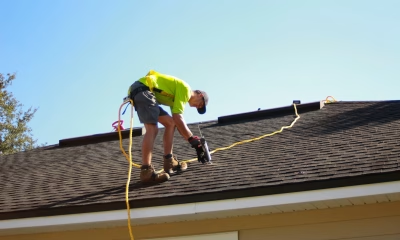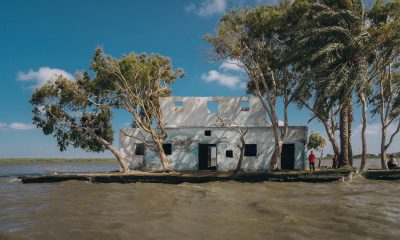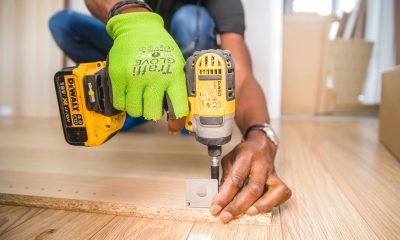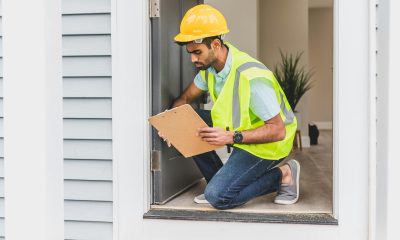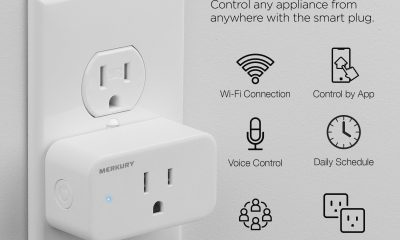Guides
How Coastal Homes Stay Reliable Year After Year?

Coastal homes capture a kind of beauty that few other places can match. Waking up to the sound of waves, feeling the sea breeze, and watching the sun reflect on the water bring a sense of calm that makes seaside living special.
The ocean air carries salt and moisture, which gradually wear down surfaces, metals, and finishes. Storms and humidity create additional challenges that homeowners can’t ignore. In Satellite Beach, Florida, these conditions are part of everyday life. Let’s discuss how thoughtful planning, durable materials, and consistent upkeep help coastal homes stay reliable year after year.
1. Materials That Resist Coastal Wear
Choosing suitable materials makes the biggest difference in how long a home lasts near the ocean. Salty air and moisture attack metal fasteners, wooden beams, and painted surfaces. Builders who understand this environment focus on products that won’t rust, rot, or weaken quickly.
Stainless steel, treated lumber, and fiber cement siding are among the top choices for homes near the shore. These materials hold up well under constant exposure to salt and humidity. Concrete, especially when sealed properly, also offers solid protection against corrosion.
2. HVAC Care That Handles Salty Air
The air conditioning system in a coastal home faces a unique challenge. Salt particles settle on outdoor coils and components, leading to corrosion and reduced efficiency. Without regular care, the system can lose performance and break down sooner than expected.
Protective coatings and scheduled cleanings make a major difference. Covering outdoor units or installing them under shade can also limit salt exposure. Homes near the coast benefit from technicians who understand these conditions. Because corrosion develops faster in salt-heavy air, choosing experienced professionals becomes even more important. For lasting performance near the shore, homeowners often seek companies that offer quality heat pump repair in Satellite Beach, FL, to prevent corrosion and wear.
3. Roof Designs That Stand Up to Harsh Weather
A roof takes the full impact of coastal weather. Wind, rain, and salt can shorten its lifespan unless it’s built for these conditions. The best roofs near the coast use materials that resist corrosion and hold firm against strong gusts.
Metal roofing, when properly coated, performs exceptionally well. Tile roofs, though heavier, handle humidity and heat effectively while offering a classic look. Asphalt shingles designed for high wind ratings provide a more affordable yet durable choice. Regular inspections are key, especially after storms. Even small cracks or loose shingles can lead to leaks and costly repairs if ignored.
4. Paints and Coatings That Strengthen Exteriors
A home’s exterior is constantly exposed to sun, salt, and wind. Quality paint and protective coatings act as the first line of defense. Marine-grade paints are specially made to handle moisture, sunlight, and air rich in salt. They form a tight seal that keeps wood and siding from absorbing water.
Repainting at the right time prevents peeling and fading before they become major issues. Many coastal homeowners refresh exterior paint every few years to maintain both appearance and protection.
5. Methods That Control Indoor Moisture
Coastal air affects both the exterior and the interior of a home. Humid air creates the perfect setting for mold, mildew, and slow structural decay. Thoughtful design and steady maintenance keep indoor moisture under control before it causes damage.
Strong insulation combined with vapor barriers helps block damp air from reaching inner walls. Balanced ventilation allows fresh air to circulate and limits condensation on surfaces. A dependable dehumidifier becomes valuable during long periods of humid weather, especially in the summer months. Homes that stay proactive about moisture management remain healthier, safer, and more reliable for decades.
6. Windows and Doors Built for Coastal Life
Every part of a coastal home faces exposure to salty air, and windows and doors experience it daily. Salt can cling to frames, hinges, and glass, slowly causing corrosion and wear. Choosing the right materials helps avoid costly replacements and keeps the home secure.
Vinyl or aluminum-clad frames hold up best against salt air. These materials resist rust and require very little upkeep compared to traditional wood. For storm protection, impact-rated glass offers both strength and safety, keeping interiors dry and shielded during heavy winds.
7. Landscaping That Protects the Property
A well-planned landscape does more than improve curb appeal. The right approach helps defend the home from erosion, standing water, and wind. Coastal soil, often sandy and loose, needs extra care to keep the ground around foundations stable.
Native plants thrive in salty air and need less water, making them ideal for coastal yards. Species such as sea oats, saw palmettos, and dune grass help hold the soil in place while reducing erosion. Shrubs and hedges act as natural windbreaks that lessen the impact of gusts during storms.
8. Maintenance Habits That Keep Homes Reliable
Reliability along the coast depends on attention and routine care. Regular inspections uncover small problems before they grow into expensive issues. A simple schedule that covers every system, like roofing, plumbing, HVAC, and exterior paint, helps preserve both comfort and value.
Cleaning salt residue off railings, doors, and outdoor equipment keeps corrosion from spreading. Checking caulking around windows and doors ensures a tight seal that blocks moisture. Roof inspections after major storms reveal damage early, allowing for timely repairs.
Coastal living brings a mix of natural beauty and environmental stress that few other settings can match. The sea breeze, sunshine, and open skies create a lifestyle many dream about, yet they also demand responsibility. Homes near the water need thoughtful design, durable materials, and regular attention to remain reliable.
A home built and maintained with the coastal climate in mind will continue to stand strong through sun, salt, and storm. The effort pays off in peace of mind, lasting value, and the ability to enjoy the seaside lifestyle without worry year after year. A well-cared-for home supports daily life with quiet efficiency, allowing families to enjoy their surroundings without worry.
9. Foundation Protection Against Coastal Conditions
While the roof shields a home from above, the foundation must handle constant exposure to moisture from below. In areas like Satellite Beach, the mix of salty air and sandy soil can slowly erode concrete foundations or invite cracks that allow water to seep in.
Applying a waterproof sealant every few years prevents salt and moisture intrusion. Homeowners should also ensure proper drainage around the property — rainwater should flow away, not pool near the base of walls. Installing French drains or maintaining a clear gutter system protects both the structure and indoor air quality.
Pro Tip: Inspect your foundation after major storms or high tides, especially if you notice shifting soil, new cracks, or uneven floors.
10. Energy Efficiency in Coastal Homes
Living by the sea doesn’t have to mean higher energy bills. With smart planning, coastal homeowners can make their houses more efficient despite humidity and salt exposure.
Double-pane, low-E windows, reflective roofing, and light-colored exterior paint help keep interiors cooler while reducing strain on the HVAC system.
Upgrading insulation and sealing small air leaks keeps conditioned air from escaping during hot summers. Some residents also use solar panels since coastal areas often receive abundant sunlight year-round — making renewable energy an affordable, eco-friendly choice.
A well-insulated home not only saves money but also protects against excess moisture and mold growth — two major coastal challenges.
11. Pest Control for Coastal Properties
Warm, humid coastal environments are ideal for pests like termites, ants, and mold-loving insects. These can damage wood structures or find entry points through small gaps around doors and windows.
Scheduling regular pest inspections and maintaining clean, sealed exteriors go a long way in preventing infestations.
Keep firewood and mulch away from exterior walls, as they attract termites and retain moisture. Natural repellents, such as cedarwood mulch or essential oil sprays, can also help manage pests without harsh chemicals.
Local Tip: In Florida, consider quarterly pest control services — many pests thrive in year-round warmth.
12. Coastal Storm Preparedness
Homes near the water must also be ready for tropical storms and hurricanes. Beyond strong roofs and impact-rated windows, homeowners should have a storm-readiness plan.
Store outdoor furniture, trim weak tree limbs, and keep emergency supplies like flashlights, sandbags, and portable power banks ready before storm season starts.
Professional inspections of roofing anchors, window seals, and doors can reveal weak points that need reinforcement. After a storm, always check the home for hidden damage — especially around the roofline and attic.
Being proactive about storm prep saves both money and stress, allowing you to focus on safety rather than damage recovery.
13. Balconies, Decks, and Outdoor Fixtures
Outdoor living areas are among the biggest joys of coastal homes — but they’re also exposed to the harshest elements. Salt air can corrode screws, railings, and deck bolts, while humidity warps untreated wood.
Pressure washing and sealing decks every year extends their life. Using stainless steel or galvanized fasteners prevents rusting and keeps structures safe. For railings and outdoor furniture, materials like powder-coated aluminum or composite wood hold up best against coastal air.
Maintenance Hack: Rinse decks and outdoor furniture with fresh water weekly to wash away salt buildup and slow corrosion.
14. Sustainable Coastal Landscaping
Beyond aesthetics, eco-conscious landscaping can make a big difference in protecting the shoreline and reducing maintenance. Choose drought-tolerant and salt-resistant native plants that don’t require constant watering or fertilizers.
Rain gardens, stone pathways, and proper grading can help direct runoff away from foundations and reduce erosion. In coastal communities, using permeable pavers allows water to drain naturally into the ground instead of pooling near the home.
Sustainable landscaping not only saves water but also creates a natural buffer that protects both your home and the surrounding ecosystem.
15. Routine Maintenance Calendar for Coastal Homes
To make upkeep easier, homeowners should follow a simple annual schedule:
-
Spring: Deep-clean HVAC coils, repaint exteriors, inspect the roof, and check gutters.
-
Summer: Watch for mold growth, test dehumidifiers, and clear salt buildup from outdoor spaces.
-
Fall: Seal windows and doors, trim vegetation, and prepare for storm season.
-
Winter: Inspect insulation, replace weatherstripping, and service heating components.
This routine helps ensure the home performs well through every season without overwhelming maintenance tasks all at once.
16. Professional Help and Local Expertise
Coastal living comes with its own science. Partnering with professionals who understand the regional challenges of salt, humidity, and storms makes maintenance easier and more effective.
When hiring contractors, look for local experience — especially those familiar with Florida’s coastal codes, storm resistance ratings, and material requirements.
Local HVAC technicians, painters, and builders in Satellite Beach, FL, can recommend the right coatings, fasteners, and designs that stand up to the coastal climate.
Working with experts who specialize in coastal construction ensures your investments last longer and perform better in the unique seaside environment.
-

 Gadgets3 years ago
Gadgets3 years agoDoes Nest Thermostats Contain Cameras Or Microphones? Is It Safe For you?
-

 Guides1 year ago
Guides1 year ago10 Best Apps To Control All Your Smart Home Devices.
-

 Gadgets3 years ago
Gadgets3 years agoWhat Is The Purpose Of Red Button On The SimpliSafe Keypad?
-

 Gadgets3 years ago
Gadgets3 years agoComplete Guide About Equalizer settings for Samsung-Soundbar
-

 Accessories2 years ago
Accessories2 years agoBlink Camera’s Temperature Sensor Settings, and More
-

 Solutions3 years ago
Solutions3 years agoWhy is My Samsung TV Picture So Dark? Exploring the Possible Causes
-

 Accessories2 years ago
Accessories2 years agoCan Siri Control Samsung Televisions And Are Samsung TVs Homekit Compliant?
-

 Gadgets3 years ago
Gadgets3 years agoFitbit Symbols Meaning: What Do The Fitbit Icons Mean?


